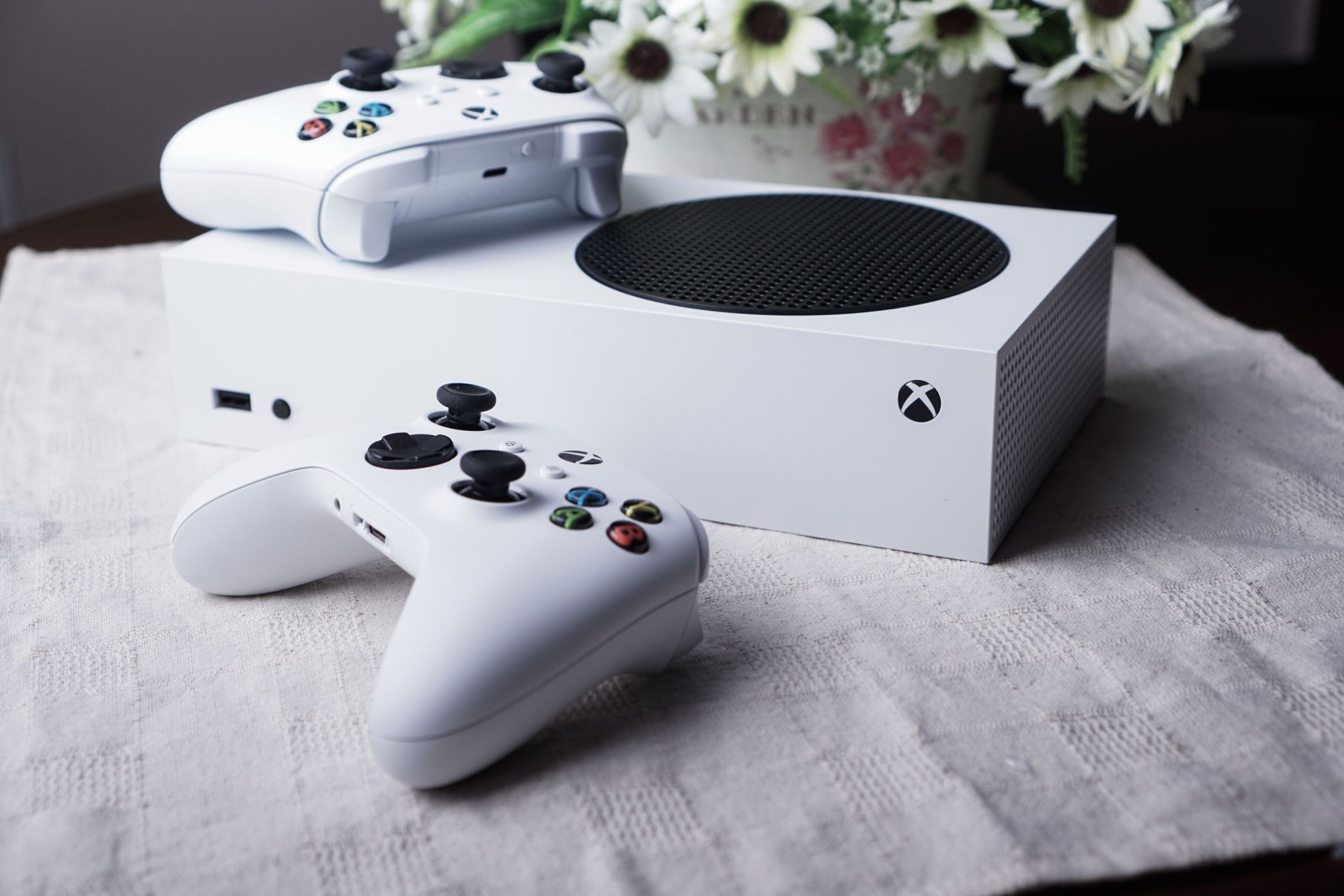It’s About Time Flagship Smartphones Bumped the Base Storage to 256GB
Apple iPhone
Quick Links
-
The Days of 64GB Base Storage
-
Flagship Phones are Evolving, Except for Storage Options
-
Bare Minimum Storage at Flagship Prices
-
Hope You Like Cloud Storage
-
The More You Use Your Phone, the More Storage You Need
-
256GB Should Be the New Norm
Key Takeaways
- Flagships haven’t increased base storage despite technological advances and have stuck to 128GB of base storage for the last five years.
- Due to the rise in the average number of apps that users download and the higher-resolution images and videos they shoot, it’s easier to fill up 128GB of storage in no time.
- While companies provide 256GB of base storage on top-end models, like the iPhone 16 Pro Max or the Galaxy S24 Ultra, they should also include similar storage in all flagships.
We’ve come a long way since 64GB smartphones were the standard, but 128GB simply doesn’t feel like enough. At a time when buyers are struggling to free up storage on their $1,000 smartphones, manufacturers have shifted their focus to upgrading other components. So why is that happening?
The Days of 64GB Base Storage
The iPhone X was the first Apple smartphone to embrace an all-screen design; it featured a 5.8-inch OLED panel that supported 625 nits of peak brightness. However, to achieve that, Apple had to cram the front camera, along with the Face ID sensors, into a notch at the top of the screen. Apart from that, the phone featured Apple’s A11 Bionic chip (10nm), 3GB of RAM, and a mere 64GB of storage (with 256GB being the highest storage variant).
The Samsung Galaxy S10, which came out two years later, was the first all-screen smartphone from the Korean tech giant. It sported a 6.1-inch AMOLED screen (with 1,200 nits peak brightness) with a much higher resolution (550 ppi), the powerful Snapdragon 855 (7nm) chipset, 6GB of RAM, and, pay close attention: 128GB of storage right from the base variant.
As more people started capturing photos from their smartphones, the number of cameras also went up. The Galaxy S10 featured a triple-rear camera setup, including a primary, ultrawide, and telephoto sensor. With other specifications, the battery capacity on flagships also went up, on both Apple and Samsung handsets.
Even though Samsung introduced 128GB of base storage on its flagships in 2019, it wasn’t until 2021 that Apple followed suit. The iPhone 13 was the first to jump from 64GB of base storage to 128GB, a welcome addition for all buyers. However, subsequent models haven’t seen any improvements in this area (barring a few exceptions).
Flagship Phones are Evolving, Except for Storage Options
Fast forward to 2024, flagships come with gigantic screens (around 6.7 inches), faster refresh rates, and up to three or four times the peak brightness. The A18 Pro chipset on the iPhone 16 Pro is about three to four times faster and, at the same time, vastly more efficient than the A11 on the iPhone X.
Even the cameras on flagship phones have been upgraded to use higher-resolution sensors. The Galaxy S24 Ultra (with a 200MP primary camera) is a case in point. Both iOS and Android phones have also bumped up their battery capacity and connectivity technology (5G and Wi-Fi 7) as well.
However, for some unearthly reason, smartphone makers haven’t upgraded the base storage on their flagship models, even when the prices have soared close to $1000 (or even more for some models).
Bare Minimum Storage at Flagship Prices
Whether it is the $799.99 Galaxy S24, the $899 iPhone 16 Plus, or the $1,099 Google Pixel 9 Pro XL, all these smartphones have two things in common – they are all the latest flagships from the respective companies, and all of them feature 128GB of storage on the base variant.
I can go on and include more models, but these are enough to make the point that expensive flagship smartphones that should come with the best-possible hardware (and software).
Yes, there are a few exceptions, like the top-specced iPhone 16 Pro Max and the Galaxy S24 Ultra, as they ship with 256GB of storage, but these phones cost well over $1,000. Have manufacturers unanimously decided that buyers paying any less don’t need more storage?
In 2024, even entry-level budget smartphones that cost $500 or less ship with 128GB of base storage. Take the $499 Pixel 8a or the similarly-priced OnePlus 12R as an example. Even the $350 Nothing Phone (2a) packs 128GB of storage.
Hope You Like Cloud Storage
You could argue that the flagships often feature faster storage (UFS 4.0), but that doesn’t make up for the lack of space that occurs after a few months of usage. Even after paying a premium, owners have to spend a fair amount of time stressing about the storage running out, cleaning up their phones, or investing in portable storage devices like external hard disks and flash drives, which aren’t cheap either.
While getting a storage device from a third party won’t benefit the manufacturers directly, getting a higher storage variant sure does. Usually, there’s a substantial difference (around $100) between the 128GB and 256GB variants of a flagship, the latter being more expensive.
If you’re concerned about storage and wish to avoid the hassle of transferring data to and fro, you have to pay more upfront. On the other hand, if you already have a 128GB flagship that’s running out of storage quite frequently, you might think of getting a cloud storage subscription, which, again, puts money into the manufacturer’s pockets (unless they don’t have the facility).
I don’t have anything against cloud storage services. In fact, they make things convenient for people who are stuck with older smartphones with 64GB of storage (especially on tablets, as they aren’t upgraded that frequently), or people like me who can’t get the 256GB version of the flagships and end up relying on the affordable cloud storage pricing.
But shouldn’t cleaning up storage or planning to purchase cloud storage be the last of anyone’s worries after spending twice or even thrice the money that buys a 128GB phone in the budget segment?
The More You Use Your Phone, the More Storage You Need
Before the global pandemic locked everyone in their homes, the number of apps users had on their smartphones was much less than in the post-pandemic era. From shopping for clothes to playing video games to claiming insurance, there’s an app for everything.
The rise in social media adoption has led people to take more pictures and record more videos than ever. This, again, occupies more storage, especially since higher-resolution cameras result in heavier photo/video sizes. Even the online messaging apps that have taken over our lives store all the media files shared in chats on our smartphones. Eventually, this fills up a significant chunk of the on-board storage.
And it’s not like a smartphone runs normally without empty storage. I recently upgraded from an iPhone 13 to the iPhone 16 (with a massive iCloud backup), and the moment it ran out of storage, there was a severe drop in performance. The same is true for Android flagships as well.
256GB Should Be the New Norm
256GB feels like the sweet spot in 2024 between controlling the cost of a smartphone and allowing buyers to live their lives peacefully. We live in an era where smartphone storage is the currency spent on all digital experiences, whether it is to buy or sell something, for entertainment, for social interaction, or for productivity; every gigabyte counts.
Ideally, companies should let go of the dated 128GB storage variant in favor of 256GB as base storage, especially on phones that cost between $700 and $1,000. Fortunately, some have already started doing this. The newly-launched OnePlus 13 (successor of the OnePlus 12), which will soon reach the global markets, comes with 256GB of base storage.
There will come a time when even 256GB of base storage will feel like it isn’t enough. Just like 128GB felt enough in the early 2020s, but it doesn’t feel enough anymore. In fact, it won’t surprise me if I find myself writing a similar article on how 256GB base storage isn’t enough some five years down the line, so join me then.





















